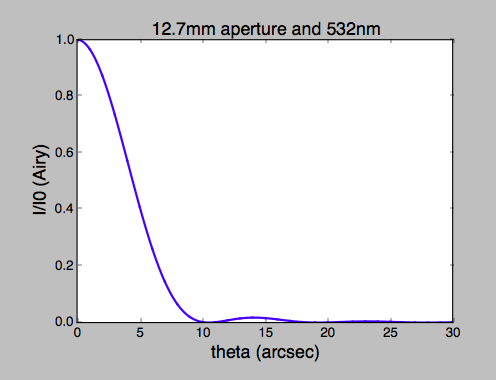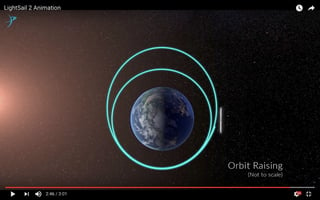The Planetary Society's new 3U cubesat LightSail spacecraft (mentioned in this answer) has corner-cube retroreflectors on on the 10x10 cm +z end, facing directly away from the sail, which will be Earth-facing as the spacecraft starts to enter night time (eclipse) as it orbits the Earth.
As discussed in this Physics SE answer, light reflected by an object moving with significant velocity in a given frame will experience a small deflection because of the finite speed of light. This is often called astronomical aberration.
The deflection in radians is about $2 \ v_{\bot} / c$, so for LEO it's about 10 or 11 arcseconds when at the zenith.
If each retroreflector is 12 mm in diameter and the wavelength is 532 nm (frequency doubled Nd:YAG DPSS laser), then the spread in the reflected beam due to diffraction is smaller than the deflection, and so the signal might be weak and difficult to receive. Actually it's worse than that, see the update at the end.
Question: What is the actual diameter of the reflectors (I've just estimated a half-inch from the images below), and have the internal reflecting faces been ground and polished a few arcseconds away from orthogonal (discussed here) to spread the beam out, as it was done for LAGEOS's retroreflectors?
update 1: It looks like I may have understated the problem (for LEO at least) when I first posted. I'll do the diffraction more rigorously now:
$\theta_{ab} = 2 \ v_{\bot} / c \approx $ 2 x 7670 / 3E+08 $\approx$ 5.07E-05 $\approx$ 10.5 arcsec.
$\theta_{Airy} = 1.22 \lambda / d \approx $ 1.22 x 532E-09 / 0.0127 $\approx$ 5.11E-05 $\approx$ 10.5 arcsec also!.
$\theta_{Airy}$ is in fact the first zero of the Airy diffraction pattern, and so diffracted light is minimal at this angle.
$$I(\theta) = I_0 \left( \frac{2 J_1(x)}{x} \right)^2 $$
$$x = k \ a \ sin(\theta) $$
from scipy.special import j1
import matplotlib.pyplot as plt
import numpy as np
halfpi, pi, twopi = [f*np.pi for f in (0.5, 1, 2)]
degs, rads = 180/pi, pi/180
a = 0.5 * 12.7E-03
lam = 532E-09
ka = (twopi/lam) * a
arcsecs = np.arange(0, 30, 0.01)
theta = (arcsecs/3600.) * rads
x = ka * np.sin(theta)
I = (2. * j1(x) / x)**2 # https://en.wikipedia.org/wiki/Airy_disk
Inorm = I/np.nanmax(I)
plt.figure()
fs1, fs2, lw = 16, 20, 2
plt.plot(arcsecs, Inorm, linewidth=lw)
plt.xlabel('theta (arcsec)', fontsize=fs1)
plt.ylabel('I/I0 (Airy)', fontsize=fs1)
plt.title('12.7mm aperture and 532nm', fontsize=fs1)
plt.show()
below: cropped and original (but smaller size than original) image of the +z end of the Planetary Society's LightSail spacecraft from this blogpost.
below: Screen shot from this Planetary Society YouTube video.






